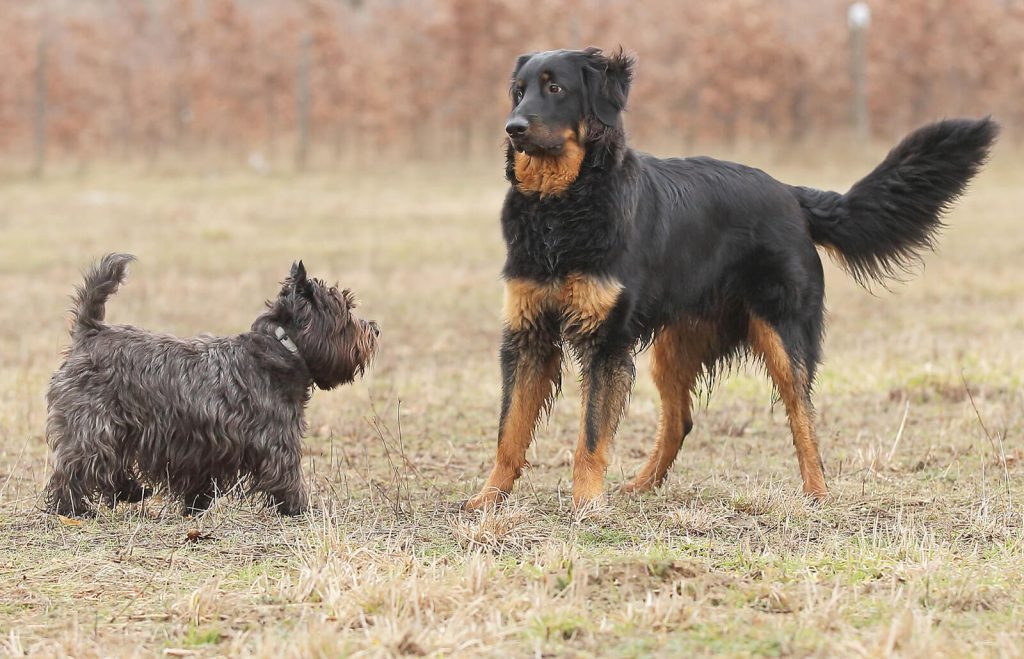The Role of Nonverbal Communication in Pet Training

The Role of Nonverbal Cues in Pet Training
In the world of pet training, effective communication transcends mere words; it involves a complex interplay of visual cues and emotional signals. Nonverbal communication is vital for fostering a strong relationship between a pet and its owner. This is especially true for dogs, who are instinctively attuned to human behavior, allowing them to pick up on subtle hints that go beyond vocal commands.
Consider the following key aspects of nonverbal communication in more depth:
- Body Language: Your posture, movements, and gestures can convey authority or relaxation. Standing tall and using confident movements can signal to your dog that you are in control, which helps them to understand that they should focus on you. For instance, leaning slightly forward when giving a command can indicate enthusiasm and encourage a positive response. Conversely, crossing your arms or turning away can imply disinterest or frustration, which can send the wrong message to your pet.
- Facial Expressions: Dogs are remarkably adept at interpreting human emotions, often looking to us for cues about how they should react in a given situation. A soft smile and wide-open eyes can instill feelings of safety and relaxation, while a stern frown can signal disapproval or alertness. When owners realize that their furry friends are absorbing their emotional states, they can adjust their facial expressions to foster a more positive atmosphere during training sessions.
- Eye Contact: The amount and type of eye contact can either foster trust or create tension. Direct and soft eye contact may encourage a dog to approach you, while a hard stare can come across as threatening or challenging. The key is to balance eye contact – too much can overwhelm, while too little might seem disinterested. Engaging in gentle eye contact while rewarding good behavior reinforces a strong bond built on trust.
Understanding these nuances of nonverbal cues can vastly improve the effectiveness of your training sessions. For example, maintaining consistent signals not only streamlines the learning process but also strengthens your dog’s ability to predict your responses, thereby reducing anxiety. In contrast, mixed messages can bewilder pets, causing confusion and frustration.
As you embark on this training journey, remaining aware of how each gesture and expression influences your dog’s reactions is crucial. Mastering the art of nonverbal communication may indeed be the secret to unlocking your pet’s full potential, enriching both their lives and yours. So, the next time you train your furry companion, remember that actions often speak louder than words and that the bond you share is built on mutual understanding and shared nonverbal signals.
DISCOVER MORE: Click here to learn about the benefits of exercising with your pets

The Impact of Nonverbal Signals on Training Success
Nonverbal communication plays a fundamental role in pet training, allowing owners to convey emotions, instructions, and expectations without the use of words. As pets are naturally predisposed to reading human behavior, understanding and utilizing nonverbal cues effectively can unlock remarkable potential for learning. By honing in on these signals, trainers can foster more intuitive and productive training sessions.
Focusing on the importance of consistent nonverbal cues can lead to a more harmonious relationship between owner and pet. Here are several key elements that significantly impact training effectiveness:
- Consistency in Gestures: A well-established set of hand signals can greatly enhance your ability to communicate with your pet. For example, using a specific hand signal consistently for commands such as ‘sit’ or ‘stay’ can help your dog understand what is expected of them. If you alternate signals for the same command, it may confuse your pet and inhibit their ability to learn.
- Spatial Awareness: The physical distance you maintain during training can influence your dog’s comfort level. Dogs are sensitive to their surroundings and the proximity of their trainers. A trainer who remains too distant may come off as disinterested, while being too close may make the dog feel cornered or pressured. Knowing when to approach and when to create space is an essential aspect of nonverbal communication.
- Positive Reinforcement Techniques: Accompanying verbal praise with an enthusiastic tone and inviting gestures can solidify the connection between nonverbal communication and the intended command. Celebratory arm movements, clapping, or even dance-like movements can ignite excitement in your pet when they successfully follow a command. This reinforces their bond with you while also facilitating learning through clear rewards.
Furthermore, awareness of environmental cues contributes to successful training sessions. Factors such as setting and distractions can dramatically affect your pet’s response to nonverbal signals. For instance, training in a quiet environment at first allows your pet to focus better on your body language without external disturbances. Gradually introducing more distractions as your pet’s confidence grows is a powerful way to utilize nonverbal cues in a variety of settings.
Incorporating these elements into your training routine can transform not just the effectiveness of commands but also strengthen the emotional bond between you and your pet. As you observe how your furry friend responds to various nonverbal cues, you can refine your approach, paving the way for a more successful and enjoyable training experience.
Ultimately, recognizing the true weight of nonverbal communication in pet training can lead to a significant improvement in your pet’s behavior and understanding. As you continue on this journey, embrace the idea that each gesture, glance, and movement holds the power to bridge the communication gap between you and your beloved companion.
In the world of pet training, understanding nonverbal communication is crucial for creating a strong bond between a trainer and their pet. This form of communication encompasses a range of behaviors, including body language, facial expressions, and gestures, which can significantly influence the training process. Nonverbal cues can provide insights into a pet’s emotional state, helping trainers to adapt their methods accordingly.
For instance, a dog that cowers or flinches may be feeling anxious or scared, signaling to the trainer that a different approach is necessary. On the other hand, a wagging tail and relaxed body posture indicate a positive emotional state, suggesting that the training session is going well. Recognizing these subtle cues allows trainers to enhance their technique and adjust their actions to meet the needs of the pet.
Moreover, utilizing nonverbal communication effectively can lead to improved learning outcomes. Pets are adept at interpreting their owner’s body language and often respond better to gestures and signals than verbal commands alone. By integrating nonverbal cues with positive reinforcement strategies, trainers can create a more engaging and effective training environment.
Ultimately, the role of nonverbal communication in pet training transcends mere instruction. It fosters a deeper understanding between the trainer and the pet, leading to a more harmonious relationship. As trainers learn to interpret the nonverbal signals of their pets, they can create tailored training sessions that respect the unique personality and emotional landscape of each animal, paving the way for successful and enjoyable training experiences.
| Advantages | Description |
|---|---|
| Enhanced Understanding | Increased awareness of pet behavior through body language. |
| Improved Training Effectiveness | Integration of nonverbal cues leads to better obedience. |
Delving deeper into the impact of nonverbal communication on pet training can yield even more benefits. Exploring techniques such as hand signals or visual indicators can transform the way trainers approach education. Pets are naturally responsive to visual stimuli; thus, incorporating these elements not only boosts engagement but also reinforces learning. The result is a trusting relationship that encourages both the trainer and the pet to thrive together.
DISCOVER MORE: Click here to learn how pets can enrich your life
Understanding Your Pet’s Nonverbal Responses
Just as human beings communicate through body language, pets also express a wealth of information through their own nonverbal signs. Understanding and interpreting these signals is crucial for effective training, as they reveal how your pet feels about the situation, the commands being given, and their willingness to engage. Recognizing these subtle cues enhances the interaction between you and your pet, resulting in a more successful training experience.
One area to explore is the importance of body language observance. Pets express a range of emotions through their posture, tail positioning, and facial expressions. For example, a dog that sits with its tail tucked between its legs and ears flattened is typically exhibiting signs of anxiety or fear. In contrast, an upright tail and a loose body indicate confidence and readiness to learn. By adjusting your approach based on these cues, you can create a supportive atmosphere conducive to effective training. Dogs, for instance, may respond better to a calm, friendly demeanor rather than a hands-on, forceful approach.
Eye contact is another pivotal aspect of nonverbal communication. In dog training, maintaining direct but gentle eye contact can enhance the bond between you and your pet. Conversely, staring aggressively may signal a threat, leading to defensive behaviors. When training your dog, offer soft gazes to reinforce your commands and help them feel more at ease. If they appear distracted or withdrawal, diverting your gaze momentarily can signal a sense of safety.
Another fascinating consideration is the influence of body positioning. For instance, leaning toward your pet when issuing a command can convey encouragement and a sense of connection. Alternatively, if you adopt a dominant stance, like hovering over them, it may cause stress or intimidation. Adapting your physical presence to align with your pet’s comfort zones is essential. The idea of “mirroring” can also come into play, where syncing your body movements with your pet can establish rapport. This technique often results in more attentive responses.
Additionally, being mindful of your own emotional state is crucial in communicating effectively through nonverbal means. Pets are savants when it comes to picking up on their owners’ energy. A trainer who is anxious or frustrated may inadvertently pass those feelings onto their pet, resulting in confusion or resistance. Staying calm and projecting positive energy during training sessions can help your pet not only understand the commands better but also feel secure and open to learning.
Moreover, the pet’s breed may also impact their response to nonverbal cues. Working dogs, for instance, may respond readily to physical signals due to their history of training and association with commands. In contrast, more independent breeds could require a tailored approach, emphasizing gentle nonverbal encouragement instead of commands alone. Understanding the nuanced communication style of different breeds can significantly shape your training methodology.
As you navigate the complex world of nonverbal signals in pet training, fostering a keen awareness of both your gestures and your pet’s responses will undoubtedly aid in building a healthy, trusting relationship. By recognizing the richness of nonverbal communication, trainers are better equipped to facilitate a rewarding learning process for their pets, ultimately leading to more effective results.
DIVE DEEPER: Click here to uncover more
Conclusion: The Impact of Nonverbal Communication in Pet Training
In summary, nonverbal communication plays an indispensable role in the realm of pet training, profoundly influencing the connection between humans and their furry companions. By being attuned to the various signals pets convey through their own body language, trainers can foster a more effective and compassionate training atmosphere. Recognizing body language, eye contact, and emotional resonance allows trainers to tailor their methods, enhancing the learning experience for their pets.
Moreover, it is crucial to consider that no two pets are alike. Their unique temperaments and breeds necessitate an individualized approach to communication, with adjustments made according to specific needs and responses. This adaptability not only improves training outcomes but also strengthens the trust and bond shared between pet and owner.
As you embark on your pet training journey, remember that cultivating a dialogue through nonverbal cues is key. Through careful observation and response to your pet’s signals, you can unlock a world of understanding that fosters both learning and companionship. Embracing the art of nonverbal communication not only empowers effective training but also enriches the shared experiences that define your relationship with your pet.
Ultimately, as we further explore the intricate dynamics of nonverbal communication in pet training, it becomes evident that enriching this dialogue can lead to profound insights and transformative connections. By diving deeper into this fascinating approach, trainers and pet owners alike can elevate their training practices and enhance the well-being and joy of the pets they cherish.



